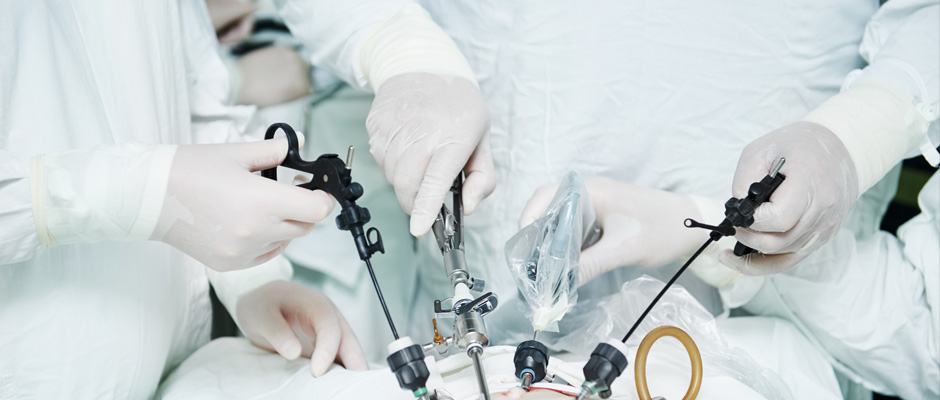Diagnostic and treatment guidelines for gastrointestinal and genitourinary endometriosis.
Feb 2, 2018
How does location of disease involvement affect the diagnosis and treatment of endometriosis?
Key Points
Highlights:
- Gastrointestinal and urogenital involvement of endometriosis presents unique challenges to its diagnosis and management.
Key Results:
- Ultrasound is sufficiently sensitive for diagnosis of pelvic DIE and bladder endometriosis and should be used to assess hydronephrosis/hydroureter.
- MRI or i.v. Pyelogram is often needed to evaluate the intestines or ureter.
- For gastrointestinal endometriosis, medical management is considered the first line due to the risk of postoperative complications associated with injury to the nerves of the lower rectum. If medical therapy fails to alleviate symptoms, surgery should be considered, and a conservative approach to shaving excision is preferred over the disc or segmental excision when indicated.
- The specific surgical technique depends on the location, size, and depth of the lesion.
- For ureteral endometriosis, complete surgical excision is preferred due to the severe and permanent sequelae of silent kidney failure associated with disease progression to ureteral stricture and obstruction.
- Bladder endometriosis is often treated surgically after temporary medical management is used for pre-operative symptom relief.
What’s done here?
- Authors from a specialized endometriosis center summarize their recommendations for the diagnosis and management of endometriosis involving several organs.
Lay Summary
Endometriosis may affect the pelvic reproductive system, but it can also be found in non-reproductive organs such as the gastrointestinal and urinary tract. The article outlined below discusses the diagnosis and management of genitourinary and gastrointestinal endometriosis.
Gastrointestinal endometriosis:
The spread of endometriosis to the gastrointestinal usually involves the rectosigmoid colon and should be considered if symptoms such as diarrhea, hematochezia, constipation, dyspareunia, and dyschezia are present. Management of this disease includes surgery for those who are symptomatic and refractory to medical therapy or for those who cannot start medical treatment. Specifically, authors recommend the laparoscopic approach. Since this region contains many neurovascular structures, damage to these structures is not uncommon. Authors additionally note that shaving excision, rather than complete resection, of bowel endometriosis yields the highest success to complication rate and is recommended for lesions below the sigmoid colon. For patients with DIE of the bowel, disc excision to remove the full thickness of the diseased portion of the intestine is recommended. In short, lesions above the sigmoid colon do not require extensive retroperitoneal dissection and can be resected by segmental or disc resection. Segmental resection at or below the sigmoid should be avoided due to high postoperative complications and thus shaving excisions to this area should be considered. Lesions along the rectosigmoid should be assessed carefully and excised by shaving excision or segmental resection. Those along the rectum should be managed by shaving excision except in cases of acute obstruction due to invasive disease.
Ureteral Endometriosis:
Common sites of endometriosis involvement include the bladder, ureter, and kidneys. Spread to the ureter is usually asymptomatic. Thus, patients who do become symptomatic have an extensive disease that can lead to silent kidney loss due to obstruction of normal urine flow. Symptoms may include flank or abdominal pain, dysuria, and hematuria. Diagnosing ureteral endometriosis is difficult, but pyelogram/retrograde pyelogram (RVP) may be used to assess extensive ureteral involvement and obstruction. A renal ultrasound may also be used to evaluate hydronephrosis. Medical management of ureteral endometriosis is not recommended in patients that have elevated the risk of severe disease progression leading to kidney failure. Laparoscopic treatment of endometriosis with complete excision of fibrotic lesions is recommended. Depending on the location of endometriosis along the ureter, varying surgical techniques can be considered.
Bladder Endometriosis:
Although bladder endometriosis is often symptomatic, treatment of this area is associated with less morbidity compared to lesions affecting the ureters. Medical therapy is used to offer temporary symptom relief before laparoscopic surgical management is initiated. Depending on the location and depth of endometriosis involving the bladder, excision or segmental bladder resection is used.
Research Source: https://www.ncbi.nlm.nih.gov/pubmed/29278234
Endometriosis laparoscopy surgery treatment diagnosis

